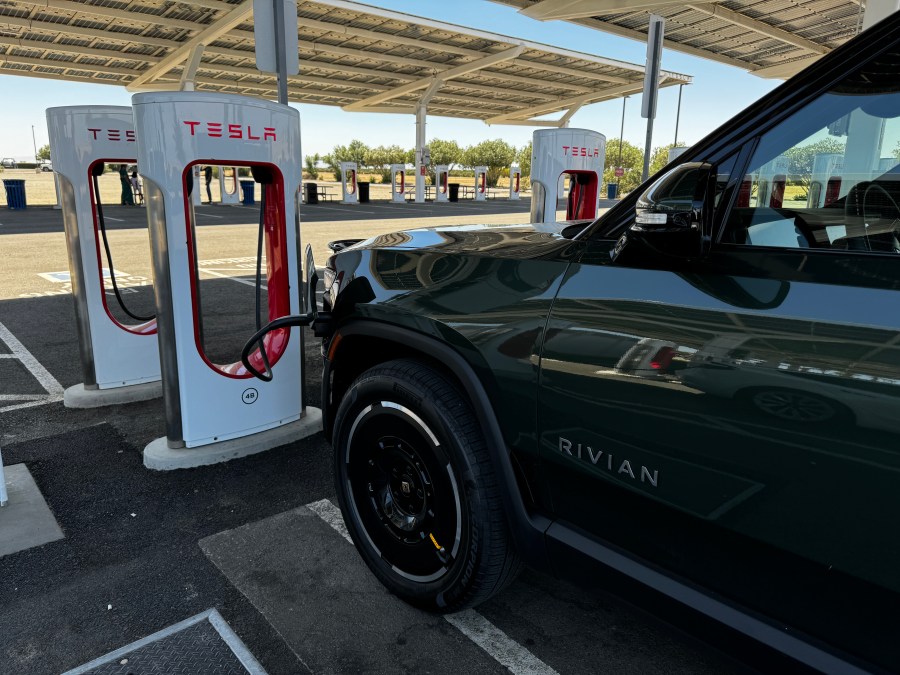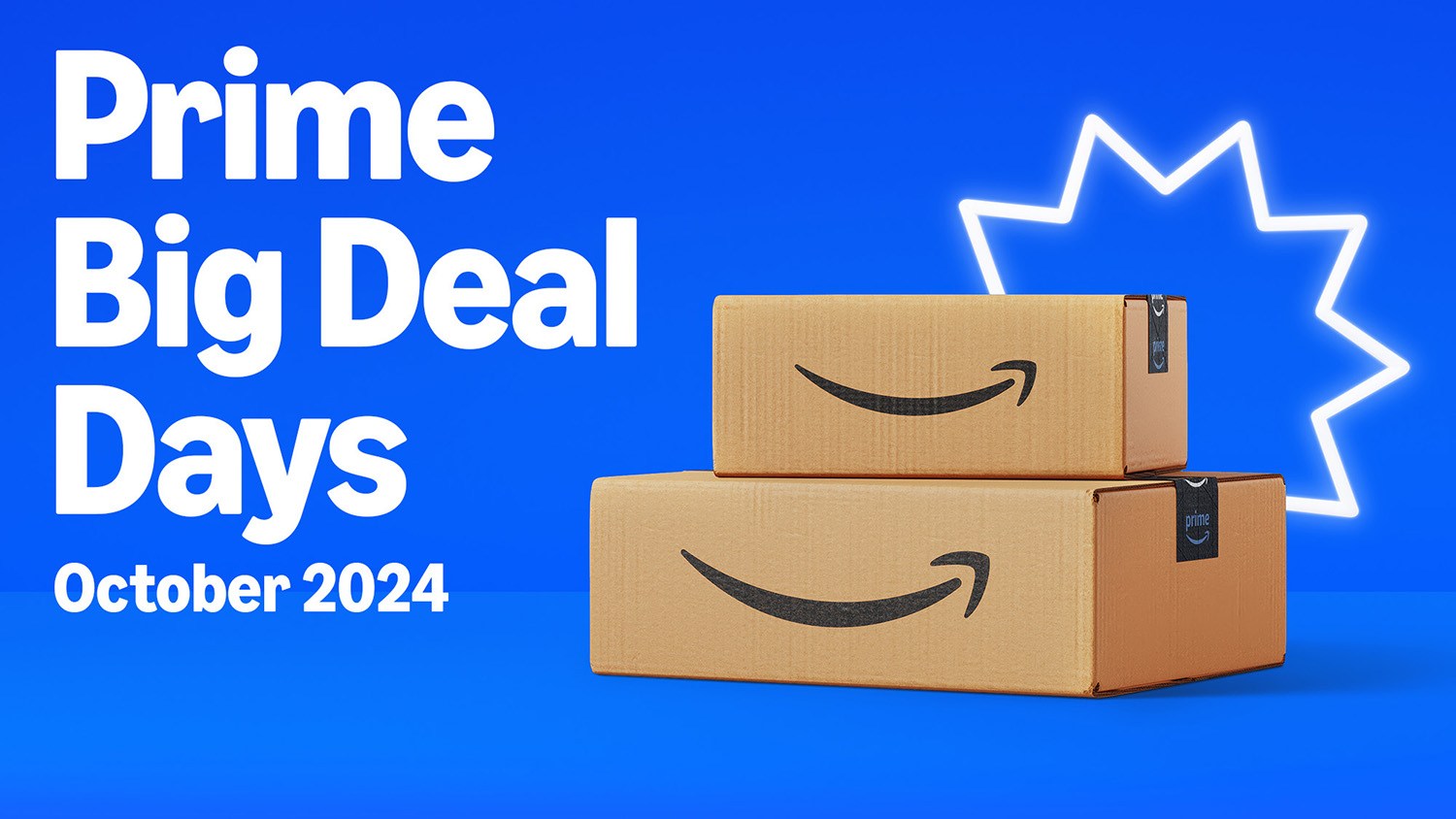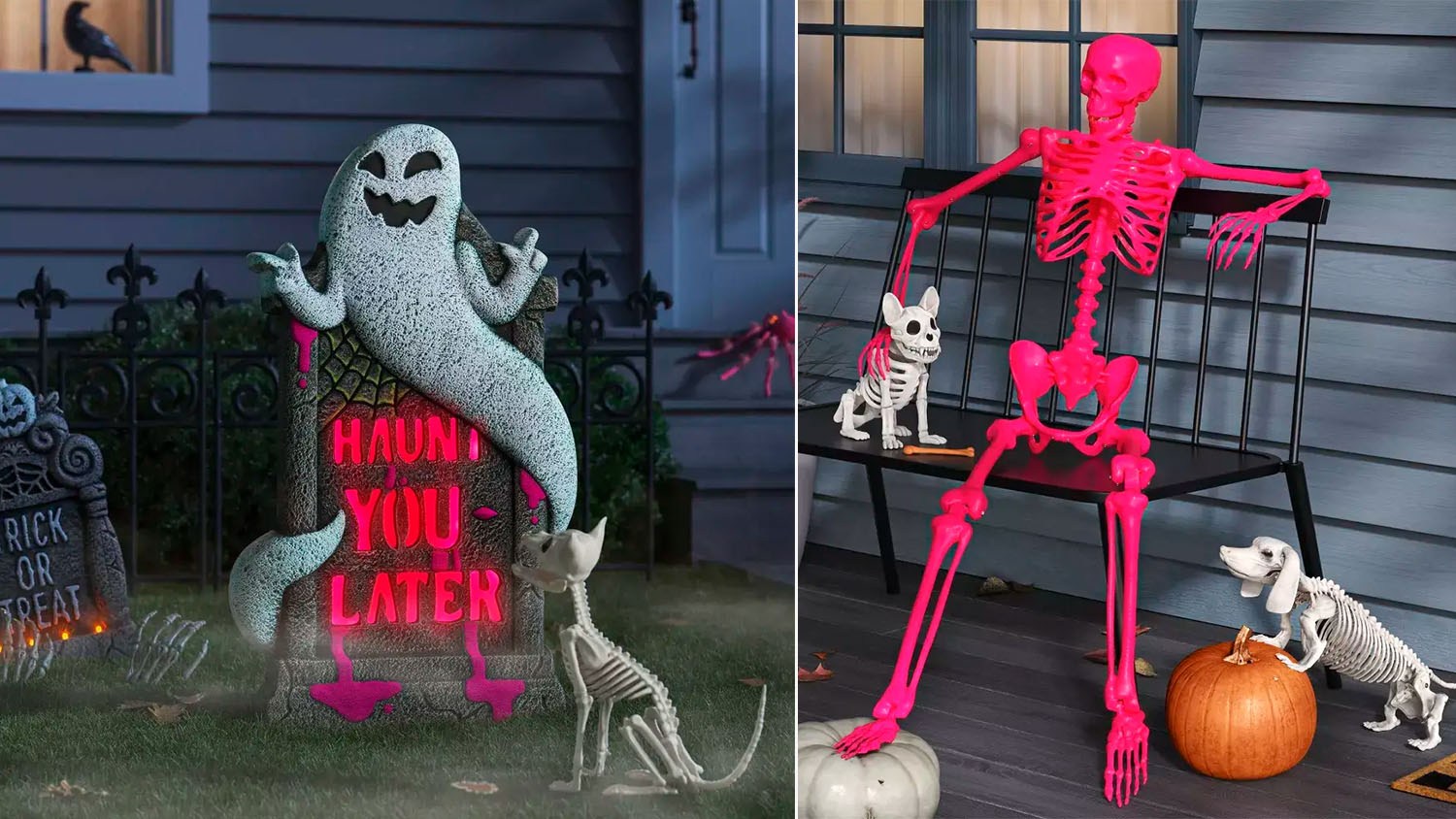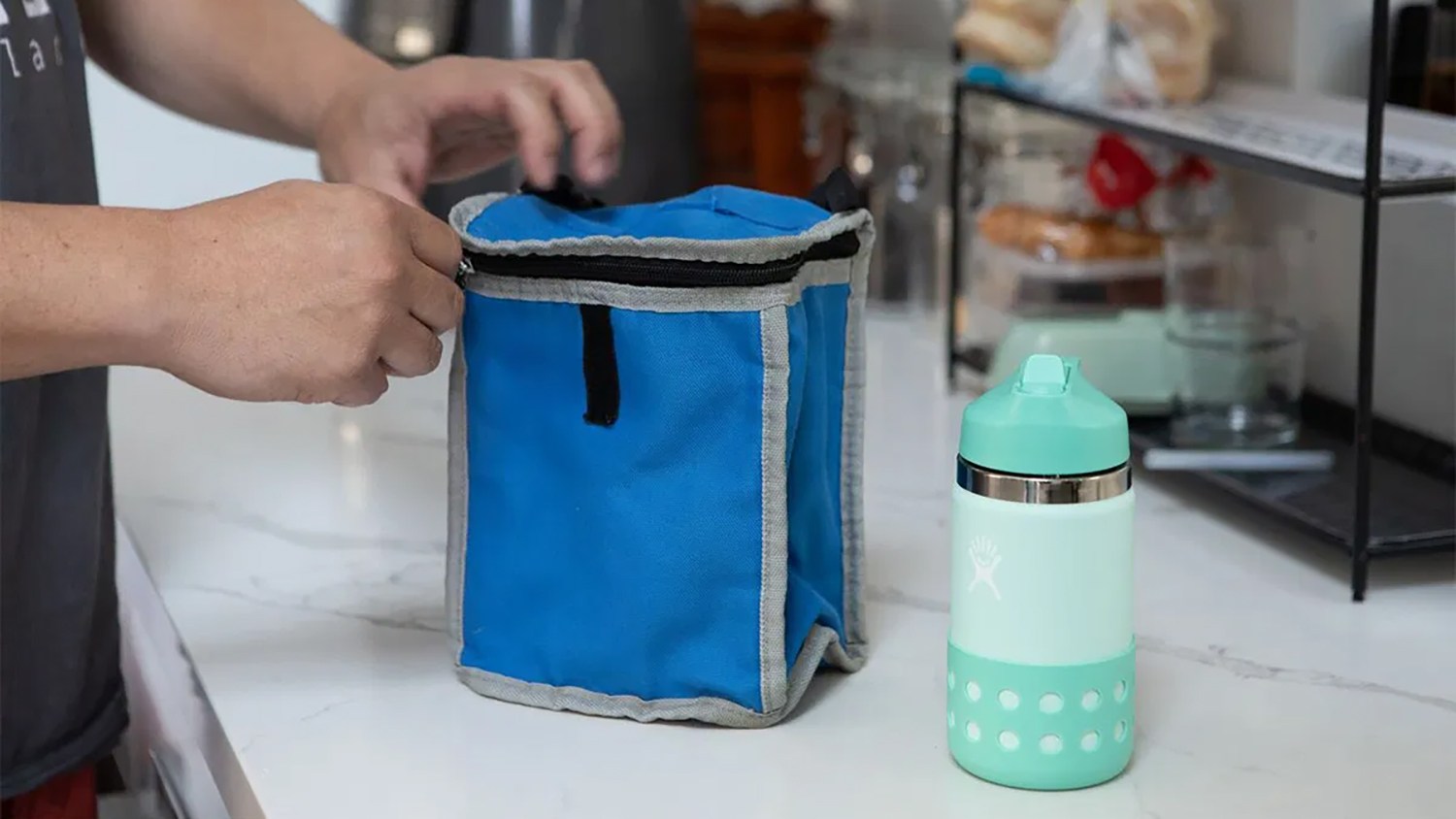Recently, I took a second-gen Rivian R1S all-electric SUV on a 350-mile road trip from LA to San Jose.
What’s unique about this trip is that the Rivian runs the latest software, which lets you charge at Tesla Superchargers.
Nearly every major automaker has adopted Tesla’s North American charging standard or NACS.
Future EVs will have Tesla’s charging port built in, but current models, like the Rivian I’m driving, require an adapter.

On my drive, I found the Rivian rugged and commanding yet comfortable. It’s spacious, smooth, and even luxurious—it should be, as the car retails for about $100,000.
If there is one quirk, it’s how fast the tailgate pops open. Best to stand back.
Rivian’s big touchscreen automatically chooses charging stops along the way and lets you filter by brand.
But at my first stop (which I picked!), a surprise!
The Tesla Supercharging station I arrived at in the middle of nowhere was all coned off.
After flagging down the workers nearby, they said it was down for maintenance, information that wasn’t reflected in the on-screen guide.
I had to think fast, and thankfully, my battery still had about 100 miles to go.
The other good news is that there are many charging stations along Interstate 5 in California.
But just to be safe, my next stop is a Rivian Charging Station.
I’m a bit surprised at the pricing for fast charging – it’s not as expensive as gas, but it continues to creep higher.
And, although I could have made it to my hotel without another stop, I still need to try Tesla Supercharging.
I find a station ahead, grab the adapter and plug in.
It takes me a moment to figure out the adapter, which Rivian sells, and it works.
The trick? You need to plug the Tesla supercharger into the adapter, then the entire contraption into the car. Once plugged in, it starts to charge and the process is seamless. Your card on file is billed.
Not every Tesla charger is compatible, but 15,000 are. Add to that the 16,000 other fast chargers around the US, and you’ve got the best of both worlds.
Before this trip, I was convinced cars need the Tesla charging port built in, but now I’m not so sure. You could easily get by with the adapter if you have a charger at home or work.
And, while charging might not be as fast as a fillup, it gives you time to enjoy the journey.
Bottom line: this is the first time I’ve driven a non-Tesla EV with no range anxiety whatsoever.
Now, if they can only get the price down on electric cars, they could be more attractive to the average buyer.






























